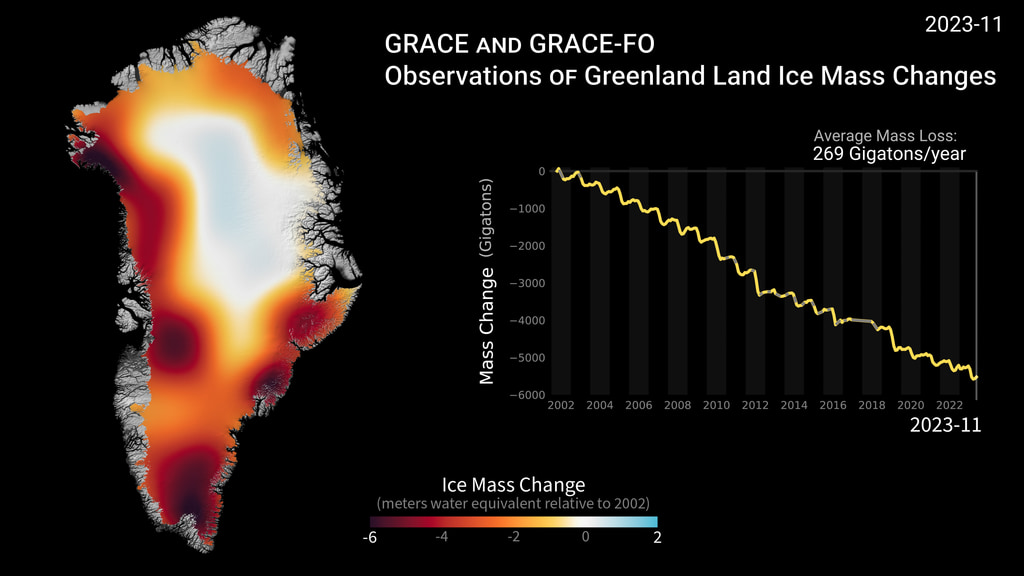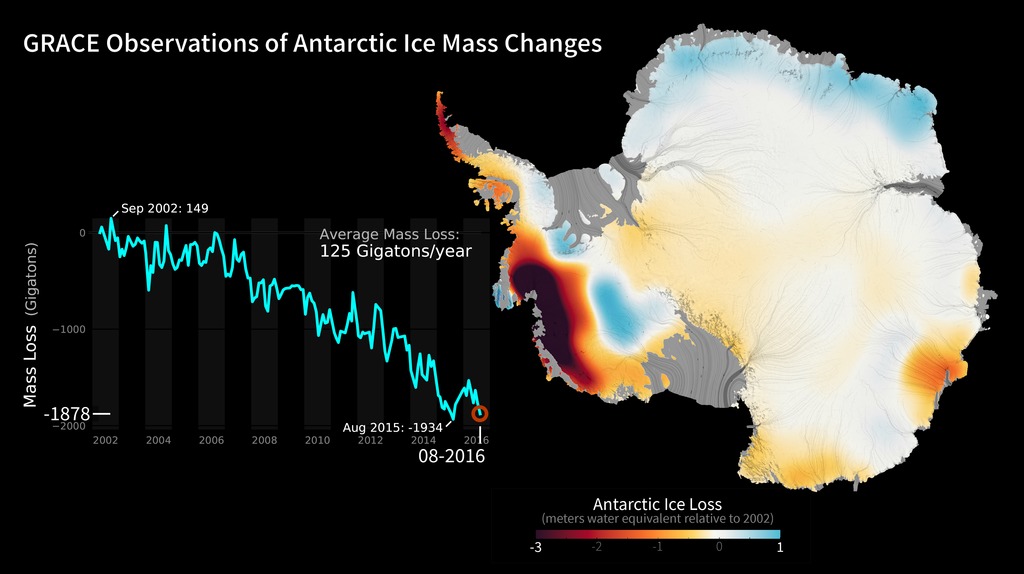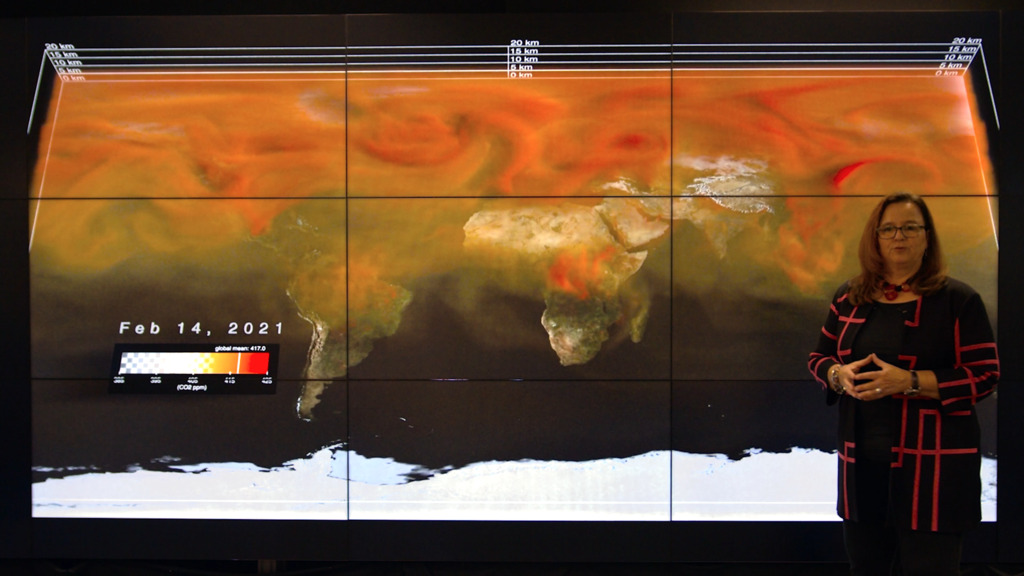Antarctic Ice Mass Loss 2002-2023
The mass of the Antarctic ice sheet has changed over the last decades. Research based on observations from the Gravity Recovery and Climate Experiment (GRACE) satellites (2002-2017) and GRACE Follow-On (since 2018 - ) indicates that between 2002 and 2023, Antarctica shed approximately 150 gigatons of ice per year, causing global sea level to rise by 0.4 millimeters per year.
These images, created from GRACE and GRACE-FO data, show changes in Antarctic ice mass since 2002. Orange and red shades indicate areas that lost ice mass, while light blue shades indicate areas that gained ice mass. White indicates areas where there has been very little or no change in ice mass since 2002. Areas in East Antarctica experienced modest amounts of mass gain due to increased snow accumulation. However, this gain is more than offset by significant ice mass loss on the West Antarctic Ice Sheet (dark red) over the 21-year period. Floating ice shelves whose mass change GRACE & GRACE-FO do not measure are colored gray.
The average flow lines (grey; created from satellite radar interferometry) of Antarctica’s ice converge into the locations of prominent outlet glaciers, and coincide with areas of highest mass loss (i.e., Pine Island and Thwaites glaciers in West-Antarctica). This supports other observations that warming ocean waters around Antarctica play a key role in contemporary ice mass loss.
Animation showing Antarctic icesheet mass losses between 2002 and 2023. Has intepolated frames for missing dates and superimposed ice sheet velocity streamlines.
Animation showing Antarctic icesheet mass losses between 2002 and 2023. Has intepolated frames for missing dates.
Animation showing Antarctic icesheet mass losses between 2002 and 2023. Has superimposed ice sheet velocity streamlines.
Animation showing Antarctic icesheet mass losses between 2002 and 2023.

Antarctic icesheet anomaly on a white background.
For More Information
Credits
Please give credit for this item to:
NASA and JPL/Caltech
-
Scientist
- Felix W. Landerer (NASA/JPL CalTech)
-
Visualizer
Release date
This page was originally published on Friday, March 8, 2024.
This page was last updated on Monday, March 10, 2025 at 12:28 AM EDT.
Missions
This page is related to the following missions:Datasets used
-
Monthly Surface Mass Anomalies [GRACE and GRACE-FO]
ID: 1113Gravity Recovery and Climate Experiment (GRACE) and GRACE Follow-On (FO) Monthly Surface Mass Anomalies
See all pages that use this dataset
Note: While we identify the data sets used on this page, we do not store any further details, nor the data sets themselves on our site.



